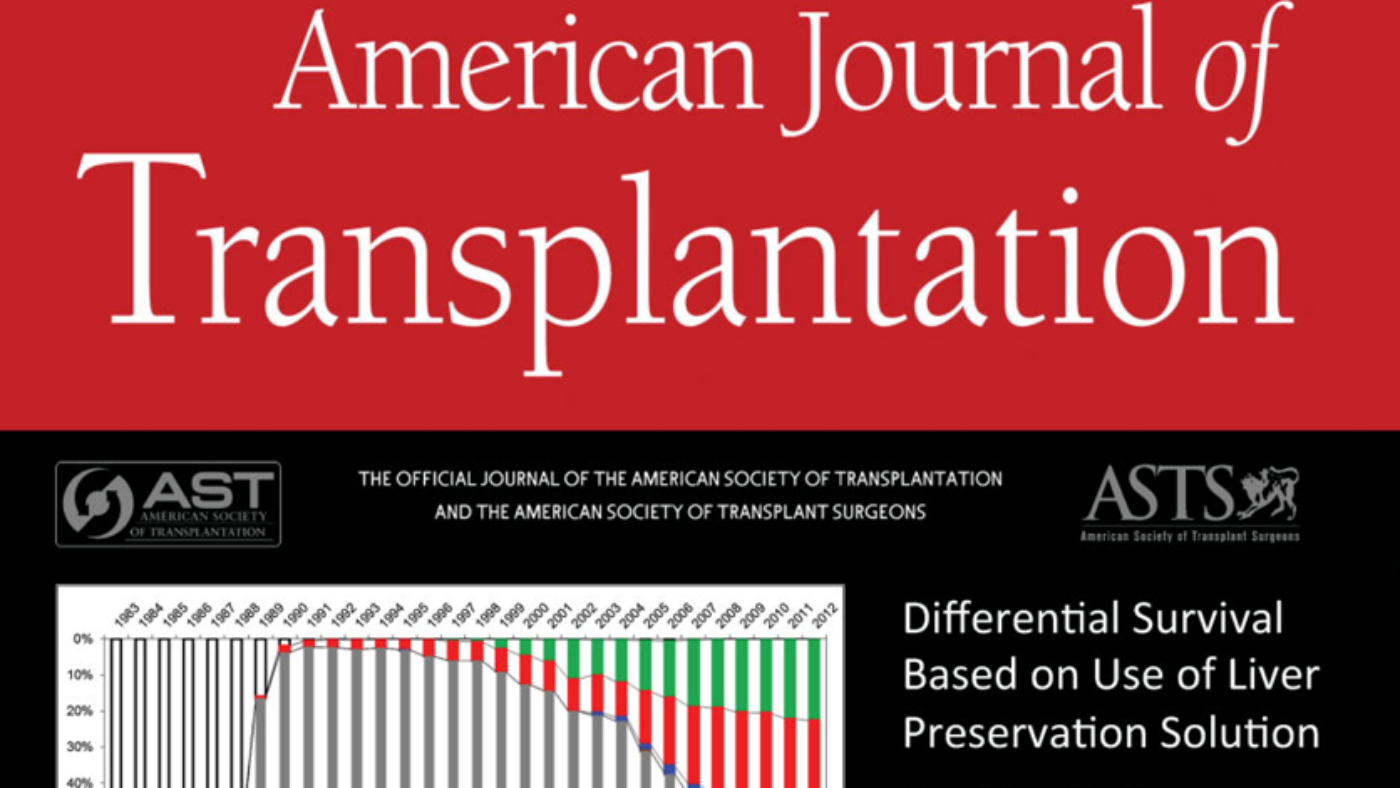First-in-human use of a marine oxygen carrier (M101) for organ preservation: A safety and proof-of-principle study
The medical device M101 is an extracellular hemoglobin featuring high oxygen-carrying capabilities. Preclinical studies demonstrated its safety as an additive to organ preservation solutions and its beneficial effect on ischemia/reperfusion injuries. OXYgen carrier for Organ Preservation (OXYOP) is a multicenter open-label study evaluating for the first time the safety of M101 added (1 g/L) to the preservation solution of one of two kidneys from the same donor. All adverse events (AEs) were analyzed by an independent data and safety monitoring board. Among the 58 donors, 38% were extended criteria donors. Grafts were preserved in cold storage (64%) or machine perfusion (36%) with a mean cold ischemia time (CIT) of 740 minutes. At 3 months, 490 AEs (41 serious) were reported, including two graft losses and two acute rejections (3.4%). No immunological, allergic, or prothrombotic effects were reported. Preimplantation and 3-month biopsies did not show thrombosis or altered microcirculation. Secondary efficacy end points showed less delayed graft function (DGF) and better renal function in the M101 group than in the contralateral kidneys. In the subgroup of grafts preserved in cold storage, Kaplan-Meier survival and Cox regression analysis showed beneficial effects on DGF independent of CIT (P = .048). This study confirms that M101 is safe and shows promising efficacy data.
KEYWORDS : clinical research/practice, clinical trial, delayed graft function (DGF), ischemia reperfusion injury (IRI), kidney transplantation/nephrology, organ transplantation in general
Retrouvez tout l’article à télécharger sur ce lien
Yannick Le Meur1,2 | Lionel Badet3 | Marie Essig4 | Antoine Thierry5 | Matthias Büchler6 | Sarah Drouin7 | Charles Deruelle8 | Emmanuel Morelon9 | Francis Pesteil10 | Pierre-Olivier Delpech11 | Jean-Michel Boutin12 | Felix Renard1 | Benoit Barrou7
1Department of Nephrology, CHU de Brest, Brest, France, 2UMR1227, Lymphocytes B et Autoimmunité, Université de Brest, Inserm, Labex IGO, Brest, France 3Department of Urology and Transplant Surgery, Hôpital Edouard-Herriot, Hospices Civils de Lyon, Lyon, France 4Department of Nephrology and Renal Transplantation, CHU de Limoges, Limoges, France 5Department of Nephrology, CHU de Poitiers, Poitiers, France 6Department of Nephrology and Clinical immunology, CHU de Tours, Tours, France 7Département D’urologie, Néphrologie et Transplantation, Sorbonne Université, Assistance Publique – Hôpitaux de Paris AP-HP, Hôpitaux Universitaires Pitié Salpêtrière – Charles Foix, Paris, France 8Department of Urology, CHU de Brest, Brest, France 9Department of Transplantation, Nephrology and Clinical Immunology, Hôpital Edouard Herriot, Hospices Civils de Lyon, Lyon, France 10Department of Vascular Surgery, CHU de Limoges, Limoges, France 11Department of Urology, CHU de Poitiers, Poitiers, France 12Department of Urology, CHU de Tours, Tours, France
© 2020 The American Society of Transplantation and the American Society of Transplant Surgeons


